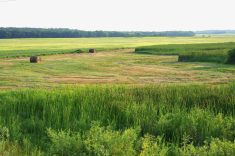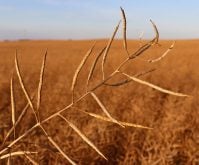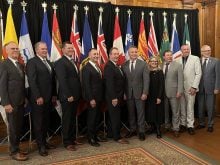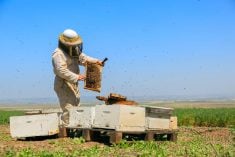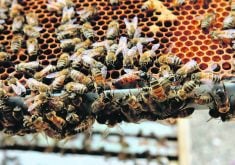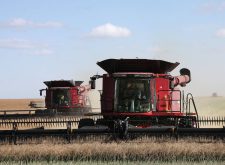Change in the AgriStability reference margin from 70 to 80 per cent may encourage more participation
The new national business risk management plan is getting a generally positive reception from farm organization leaders. The new framework, titled the Sustainable Canadian Agricultural Partnership, was announced by federal, provincial and territorial agriculture ministers following their annual meeting at the end of July.
Grain Growers of Canada chair Andre Harpe said he was glad the ministers were able to reach a decision, after initially hearing they were having problems finalizing a deal.
“I was quite surprised that they did reach a deal. A program is better than no program, and if they hadn’t signed a deal, it would be in flux, and that’s not good for anybody.”
Read Also

Seeding Indigenous agricultural prosperity
National Circle for Indigenous Agriculture and Food says Indigenous agricultural success needs strong relationships.
Harpe said a five-year framework gives farmers more stability.
“One of the other things I like is that $250 million goes to environmental stewardship. It’s going to be interesting to see what that comes out like.”
Harpe also welcomed the change to AgriStability. The new partnership commits the feds and provinces to boost the reference margin compensation rate for the program to 80 per cent from the current 70, which is expected to provide another $72 million per year for enrolled farmers. Harpe said participation in AgriStability has only been about 30 per cent so far.
“Back in 2013, accessibility to it became more limited by some of the restrictions put in place. It became really hard to access.”
Roger Chevraux, a grain farmer from Killam and chair of the Alberta Canola Producers Commission, said the federal government increased funding for AgriStability, which was one of the delays on an agreement.
“The reference margin was fixed last year in the other agreements, and this (increased funding) was a sticking point that wasn’t covered back then. So, this is a positive for us for sure,” said Chevraux.
“The changes to AgriStability are very positive,” said Brad Dubeau, general manager of Alberta Beef Producers (ABP).çcc
“There’s still some work to be done, but the increase to the overall envelope is very positive. The compensation rate of 70 to 80 per cent is also very positive. We’re looking forward to more details around what some of the requirements will look like on the environmental side of things.”
Dubeau said ABP will evaluate the program to ensure it works well for the cow-calf and feedlot sectors. The program must respond quickly and appropriately to producers who have enrolled, he said.
“There are continued upgrades that we’d like to see for the program so it works well for all sectors,” he said.
“We would encourage producers to talk to their financial advisor or accountant to determine if the program is something that they should be a part of. We’re taking the steps, and the government of Alberta and the federal government are taking the steps to make it work better for producers in general.”
Sheila Hillmer, who owns a mixed farm near Del Bonita, Alta. said there haven’t been many insurance options for cow-calf producers.
“Building a more robust business risk management system will hopefully help longer term and help with the sustainability and viability of our current and future producers.”
Hillmer said that because her operation has grain and a cow-calf operation, one entity can offset the other and prevent her from qualifying for AgriStability.
“There’s so much overhead in each, but they tend to look at profitability in very siloed ways. Those of us who are diversified tend to get excluded and I think we’ve got to find ways to look at each entity in the business,” she said.
“I think we have to find a much more robust system to look at all ag sectors and whether you are diversified or not.”
Still, Hillmer sees the new funding framework and changes to AgriStability as positive.
“I’m happy the government is recognizing the need to work with agriculture and continues to invest resources in agriculture, specifically the cattle industry, to make it a much more attractive and sustainable industry for youth in the future.”



